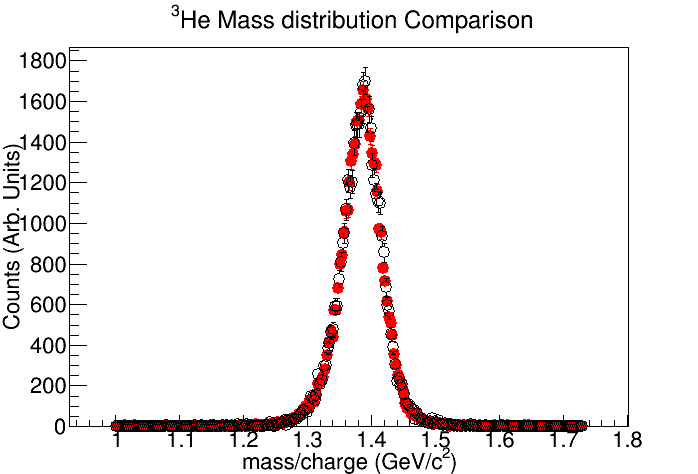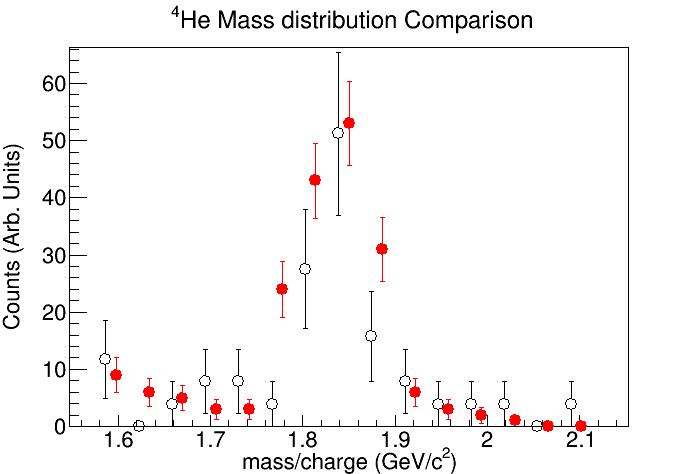Paper Proposal: Matter-Antimatter Mass difference measurement of (Anti)Triton, (Anti)He3, and (Anti)He4
Title: Matter-Antimatter Mass difference measurement of (Anti)Triton, (Anti)He3, and (Anti)He4
PA's: Emilie Duckworth, Jinhui Chen, Declan Keane, Ashik Ikbal Sheikh, & Zhangbu Xu
PA Representative: Emilie Duckworth
Target Journal: Physical Review Letters
Abstract:
%% we were able to identify and measure the mass difference of these products produced by the collisions.
The mass differences for $^3H$ and $^3\overline{H}$, $^{3}He$ and $^3\overline{He}$, $^{4}He$ and $^{4}\overline{He}}$
%% Triton, Helium-3, and Helium-4 with their antimatter counterparts
are $1.9 \pm 3.3(stat.) \pm 0.13(sys.)$, $1.9 \pm 3.1(stat.) \pm 0.34(sys.)$, and $-25.6 \pm 47.0(stat.) \pm 0.5(sys.)MeV/c^2$ respectively. These are the first measurements of the mass difference between $^{3}H$ and $^{3}\overline{H}$ and between $^{4}He$ and $^{4}\overline{He}$. All differences are consistent with zero within uncertainties, as predicted by CPT symmetry. These measurements present such a test with the heaviest stable anti-nuclei observed to date.

Figure 1: dE/dx plots of all tracks with a TOF mass2 measurement within 20% of expected mass value. The black lines correspond to fit lines for the expected dE/dx measurement for the studied nuclei. For all nuclei there is a clear grouping of tracks around the expected dE/dx measurement curve, indicating the presence of these nuclei in the final state of the collision.



Figure 2: Mass distributions of studied nuclei after the overlay procedure. Red data points are the positively charged nuclei. Black data are the negatively charged nuclei. The negatively charged mass distribution data was re-scaled and shifted along the x axis to minimize the chi2 between it and the positively charged mass distribution data. This method of comparison removes the need for a precise mass function and also avoids the need for background estimation when fitting the distribution.

Figure 3: Measurements of ∆m/m of respective particles. For Clarity there is a y axis offset for the ALICE and ANT71 measurements. Brackets represent systematic errors, bars represent statistical errors.
Conclusion:
In this work we have measured the mass differences between Triton, Helium 3, and Alpha with their antimatter counterparts. These values are consistent with zero, as predicted by CPT symmetry. This is the first time the mass of anti-alpha has been measured after its first observation in 2011, and is the most massive antimatter state measured. The mass difference measurement of Helium 3 has significantly reduced systematic error over the previous result using a similar method.
- educkwort's blog
- Login or register to post comments
